Nosebleeds shouldn’t last for more than 20 minutes
The technical term for a nosebleed is ‘epistaxis’. It is rarely a cause for concern. Most nosebleeds can be solved by sitting down, breathing through the mouth and pinching the soft region of the nose for around fifteen minutes. An ice pack can speed up the process.


If you follow this process and the nosebleed doesn’t stop after 20 minutes, this can signify a deeper issue. Anyone who experiences a prolonged nosebleed of this nature should call emergency services or visit their nearest accident and emergency service, as it may be caused by a serious injury, high blood pressure or a blood clotting disorder.
Nosebleeds shouldn’t happen more than once a week
Chronic nosebleeds, which may be defined as those that happen more than once a week, can be an unpleasant and disruptive experience and require medical attention. They may be caused by something as simple as the nose reacting to dry air.


Other possible causes, however, include blood clotting disorders, a deviated septum or a disease called hereditary hemorrhagic telangiectasia. Alternatively, some blood-thinning medicines, known as anticoagulants, can trigger nosebleeds that cannot be stopped easily with home remedies.
A runny nose shouldn’t involve watery drainage
A runny nose is an incredibly common symptom of a viral infection, and the vast majority of cases clear up quickly on their own. However, an excessive amount of watery drainage from the nose and ears can be a sign of a very different condition.


The fluid that surrounds and protects the brain is called cerebrospinal fluid. If a membrane in the skull gets torn, the cerebrospinal fluid can leak out and flow from the nose and ear. It is important to seek medical advice, which may involve bed rest or surgery.
The skin around the nose is intact
The medical term ‘rhagades’ comes from the Ancient Greek word ‘ragas’, meaning a crack or fissure. It describes a branching pattern of scarred skin around the nose, mouth and cheeks, and it is often a symptom of a bacterial infection.
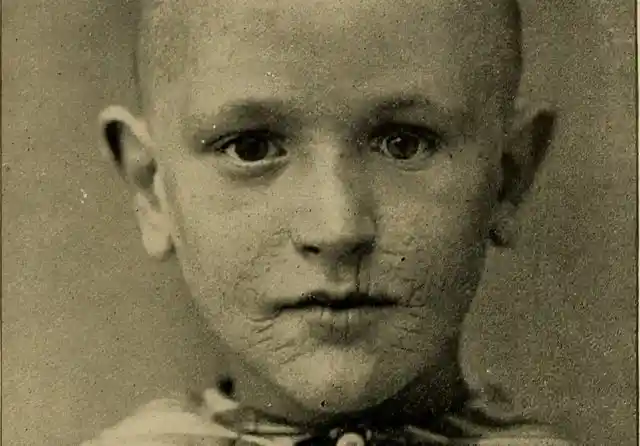
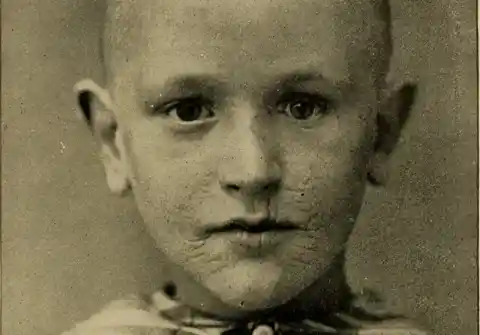
Specifically, rhagades is most often a sign of late-stage congenital syphilis. This disease occurs when a pregnant woman has syphilis and it is transferred to her unborn or new-born child. Around one million babies are born with congenital syphilis every year.
There are no lumps or bumps inside
Nasal polyps are benign growths that crop up inside the nose and sinuses. If large, they can affect your breathing, sense of smell and sense of taste, as well as causing an unpleasant runny nose. They are very common and 40% of people will experience them at some point in life.
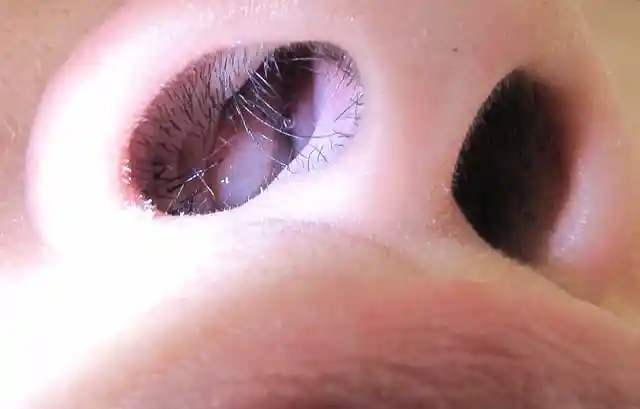
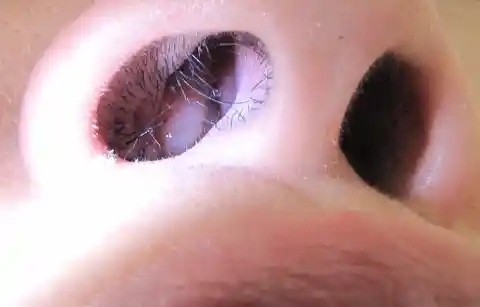
Historical records of this condition date back to the Ancient Egyptian era. There is no clear reason why nasal polyps develop in the first place, but they can be easily treated with steroid medication, typically in the form of a nasal spray.
Sinus infections are cleared up by antibiotics
The vast majority of sinus infections don’t even require antibiotics, and they will clear up on their own. Only 15% of sinus infections require antibiotics for treatment. However, in very rare cases, even antibiotics are unable to solve the problem.


This is a cause for concern. Chronic sinus problems that seem untreatable can be a sign of head and neck cancers. Other symptoms of these diseases are nosebleeds, frequent headaches, upper tooth pain, dental problems and swelling around the eyes.
There should be no bad smell without cause
If you cannot trace the source of a terrible smell, you may be experiencing a sensory system malfunction. One cause of a bad smell in the nose is fungal sinusitis. This condition often presents with nasal congestion, sinus pain and a swollen nose.


It is most often caused by the fungus Aspergillus fumigatus, although Aspergillus flavus and Aspergillus niger can also be the culprits. The disease is more common in middle-aged people and a doctor may recommend surgical debridement, which is the removal of infected tissue.
The sense of smell is working fine
To lose your sense of smell temporarily is unpleasant, but not at all uncommon. Many cold viruses and allergies may cause anosmia (lack of smell) or hyposmia (a decreased sense of smell), either of which should return to normal during recovery.


Ageing, too, can lead to a loss of the sense of smell and taste. However, losing your sense of smell long-term can be a symptom of a brain injury, diabetes or dementia. It has also been reported as an important early sign of Alzheimer's disease.
The sense of smell remains consistent
While the total loss of smell may be easy to notice, sometime this sense declines gradually over time, in a process that can be hard to pin down. It is important to be aware if your smell sensitivity is vanishing over a long period of time.
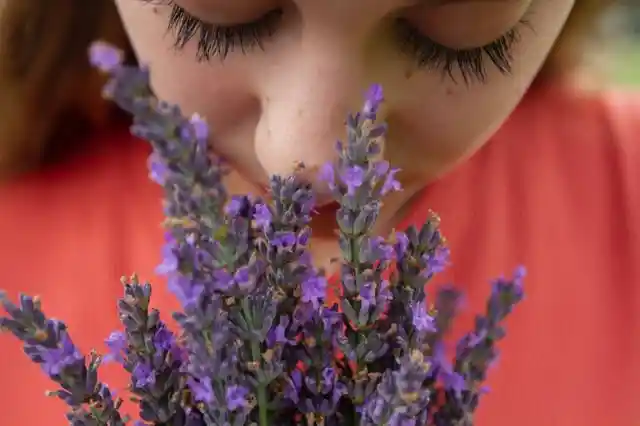

Hyposmia can make it hard to differentiate between different smells, as well as detecting them. Like anosmia, hyposmia can also be an early warning sign for diabetes. Furthermore, it is sometimes associated with hormonal imbalances, malnutrition and even gum disease.
Smells can be traced to a source
Most of the time, it should be easy to trace the source of a smell in your immediate vicinity. If you are persistently smelling odours that have no clear origin, you may be suffering from phantosmia, also known as olfactory hallucinations.


Phantosmia accounts for around 10-20% of olfactory disorders. It may cause the sensation of smells like burning rubber, rotten food and staleness. In rare cases, this can be a symptom of a stroke, epilepsy, a brain tumour or exposure to certain toxic chemicals like lead.
The nose isn’t flushed
A red rash over the nose bridge and cheeks is sometimes referred to as a ‘butterfly rash’. Such a rash can be caused by diseases like pellagra, dermatomyositis or Bloom syndrome, but most commonly, it is associated with the condition lupus erythematosus.
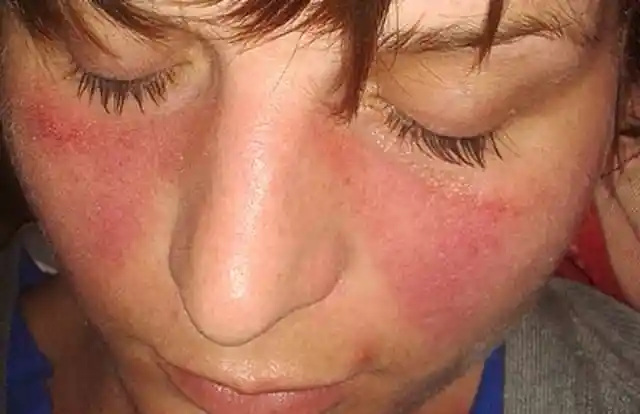
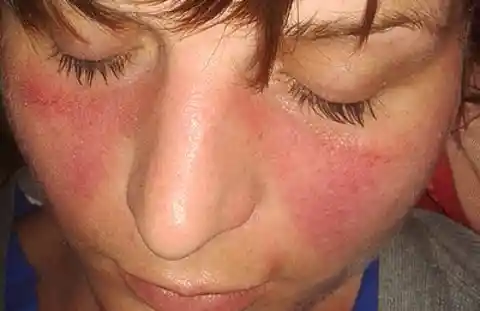
This group of autoimmune diseases can attack many parts of the human body, including the heart and lungs. It occurs when the immune system goes into overdrive and attacks healthy tissue. The famous ‘butterfly rash’ is seen in about 50% of patients with systemic lupus erythematosus.
The nose’s skin is soft
The skin around the nose is usually soft and fleshy to the touch, but the common skin condition rosacea can cause it to harden over time. Rosacea is characterised by long-term flushing and broken blood vessels on the face, which may be harder to spot on darker-skinned people.
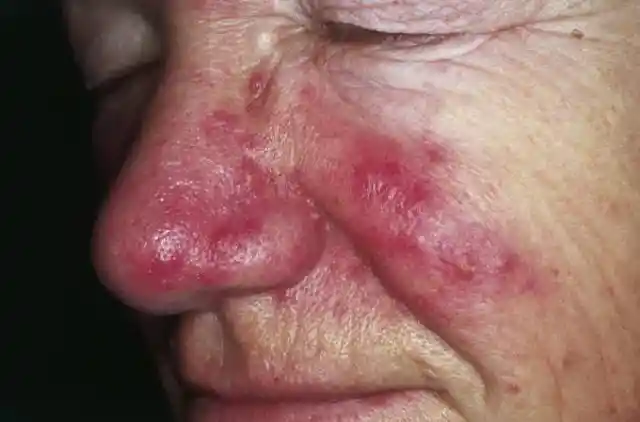
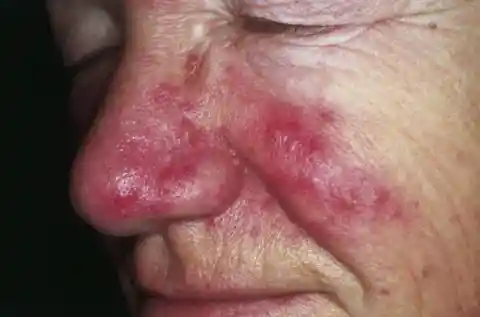
It is unclear what exactly causes rosacea, and no cure has been discovered so far. However, the condition can worsen over time without treatment. A doctor may prescribe gels, creams or antibiotics that can help to ease more extreme symptoms.
The ‘allergic salute’ is just a habit
The so-called ‘allergic salute’ is the habit of wiping the nose upwards due to mucus or itching. It is common in children, and it isn’t generally a health risk except for the potential transfer of bacteria or viruses via the wiping hand to other people.


However, the allergic salute is occasionally spotted when someone is having an epileptic seizure, and it is considered a semivoluntary action. In very rare cases, epilepsy can cause another nasal symptom: sneezing. Cluster sneezing has been observed in patients who have recently experienced epileptic seizures.
New-born babies should have a clear nasal airway
Obligate nasal breathing is the need to breathe through the nose, rather than the mouth. Many animals fit into this category, including horses, rabbits, cats and rodents. Human babies, too, are considered obligate nasal breathers because they breath through the nose instead of the mouth.


Babies with choanal atresia have a blocked nasal passage and, at birth, may struggle to breathe through the nose at all. This can lead to a deadly lack of oxygen. Choanal atresia is sometimes counteracted when the baby cries for the first time, as it triggers airflow through the mouth.
Nasal hair is a good thing
While it might well be tempting to pluck, trim or wax away visible nose hair, this hair performs important hygienic functions for the body. It helps to trap foreign material such as viruses and dirt, preventing it from entering the airways.
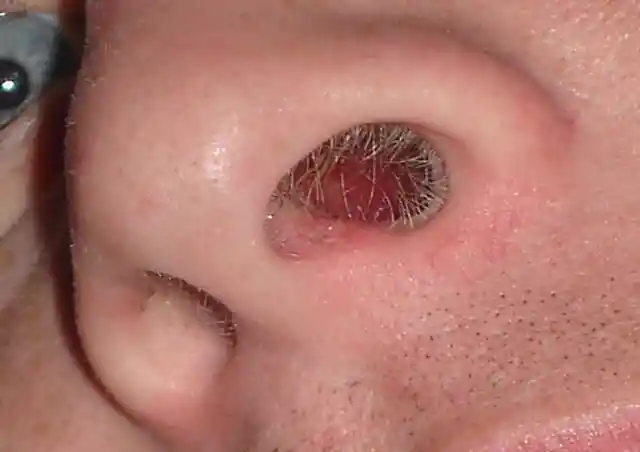
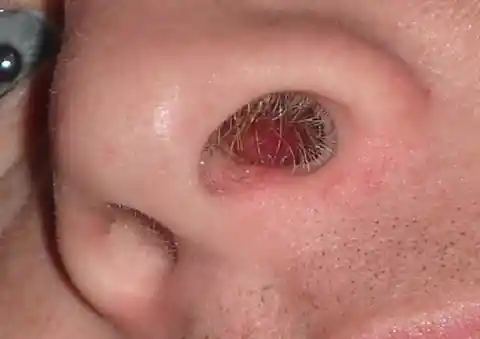
Nasal hair is particularly useful in people who have asthma and seasonal allergies. A 2011 study showed that people who have a pollen allergy are less likely to develop asthma if they have plenty of nasal hair. This is because the hair is so effective in catching irritants in their tracks.
The nose is free of itches
We’re all used to the occasional irresistible urge to itch the nose. But a persistent itch, a sensation known in medical literature as nasal pruritus, is often the result of inflamed or irritated tissue. Many different disorders and diseases can trigger this unpleasant feeling.


An itching nose is most often caused by allergic rhinitis, which is a reaction to allergens like pollen and dust, and this can be eased with a GP-prescribed nasal spray or a saltwater rinse. Some food allergies, as well as nasal polyps and sinusitis, share this symptom.
There’s no burning sensation
Burning and itching alike are often caused by nasal inflammation. This happens when the nose encounters allergens and leads an immune response, including a rush of histamines that may set off that burning sensation.


Beyond hay fever and other allergic reactions, a burning nose can be a symptom of a respiratory infection like a cold virus. Often accompanied by fever, a runny nose, a cough and headaches, this burning feeling should go away once the infection clears up.
The nose isn’t swollen
Localized swelling can take place in many parts of the body, and the nose is no exception. Swelling can make the nose painful and sensitive, and the nose may become temporarily misshapen as its tissues start to fill up with fluids.


Like internal swelling, visible external swelling of the nose can be the result of either an infection or an injury. A broken nose is a common facial injury, especially in fights, car accidents and falls. Even an insect could injure your nose: bites and stings can trigger massive swelling and may threaten to obstruct your airways.
Speech is clear and plosive
It may surprise you to hear that speech requires a lot of nasal function as well as oral function. People with a cleft palate, or oral and nasal cavity malfunctions (velopharyngeal inadequacy, or VPI), may find that air passes out through the nose inadvertently while they are speaking.


As a result, it can be very difficult to pronounce sounds that need a lot of oral air pressure, such as the plosive consonants ‘P’ and ‘S’. Frustrating though this may be, it can be solved by altering pronunciation and using a softer voice.
There is no line across the nose
Some people develop an unusual horizontal line across the nose, known as a transverse nasal crease or groove. It is usually paler on light-skinned people and darker on dark-skinned people. It isn’t reported very often at all in medical literature.
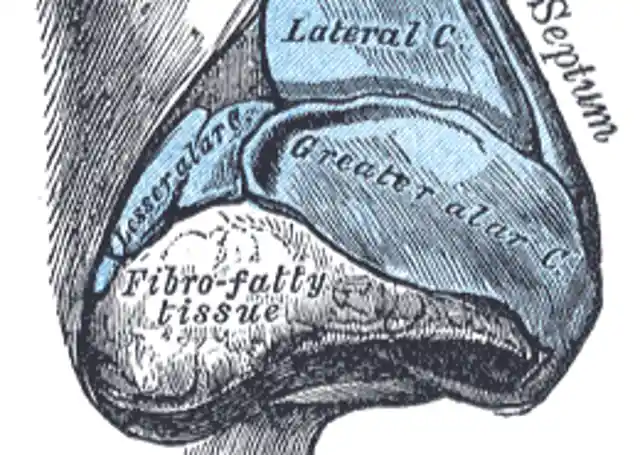
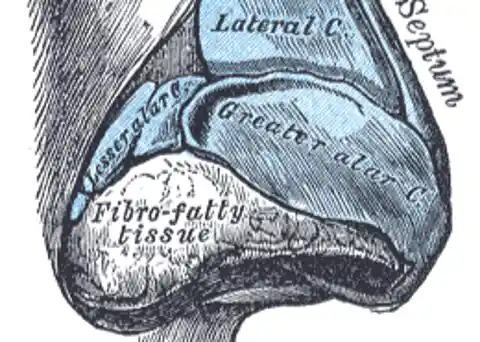
While this symptom is harmless on its own, it may be the result of a physical injury that may need medical attention. It can alternatively be caused by the so-called ‘allergic salute’, a common behaviour in people with chronic runny nose from allergies.
There is no bruising around the nose
Sometimes, after the initial shock of an accident, it can take a while to notice your own injuries – particularly if the skin is bloodied. The nose is particularly susceptible to bruising as a result of facial injury, as it contains many small, delicate blood vessels.
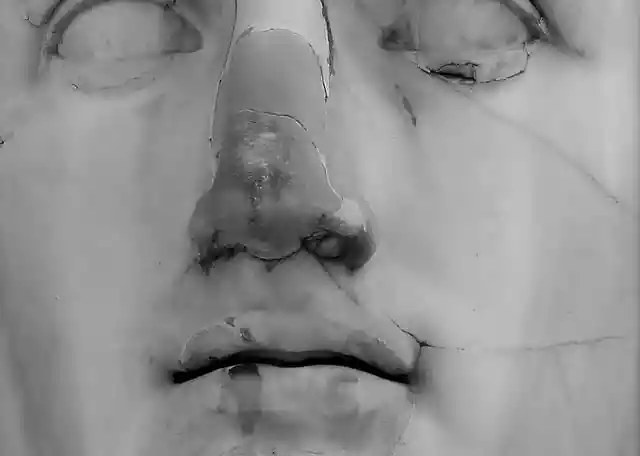
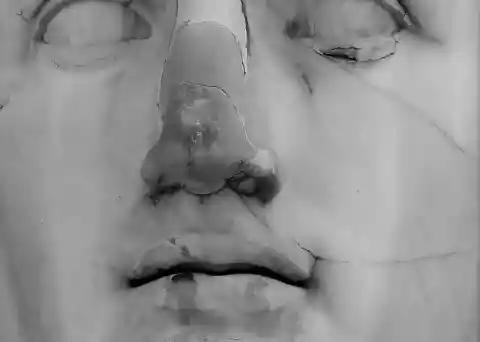
Bruising, also known as contusion, can be very painful around this area. It is advisable to place an ice pack on the nose for ten minutes on and off, repeated as often as possible over the course of a day. Over-the-counter painkillers can help to manage the pain.
The nose has normal sensation
In extremely cold weather conditions, it is important to take note of any numbness in your nose, fingers, toes and other extremities. This symptom can be an early sign of frostbite, an injury where tissues in the body start to freeze over.


If your nose loses sensation and shows a red border, along with potential swelling, you may be suffering from first-degree frostbite and it is essential that you seek medical attention. Prolonged exposure to the cold will only worsen this condition.
The nose has no blisters
A common ailment of extreme mountaineers, frostbite, like a regular burn, is graded by degrees. Second degree frostbite bears more serious symptoms which appear soon after the onset of the condition, such as vivid blisters that may appear on the nose, face, fingers and toes.
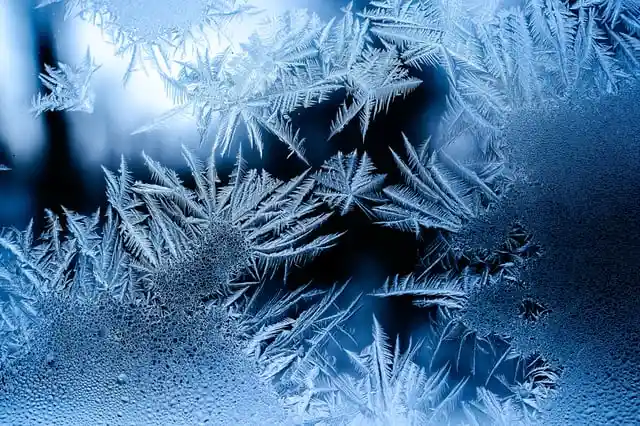

The skin’s surface may harden as the blisters appear. In third degree frostbite, blood blisters appear and the skin turns a blue-grey hue. Only in fourth degree frostbite is there a risk of the affected area falling off after a few months.
There’s no crunching or crackling sound
After an accident that involves facial injury, you may find that your nose becomes swollen, sore and even produces a crunching or crackling sound when you touch it. Along with a blocked feeling, these are key symptoms of a broken nose.


Broken noses usually heal of their own accord within about three weeks, although they can be distressing and painful. Applying an ice pack can aid the healing process, and a doctor may recommend placing extra pillows on your bed to keep you upright while sleeping, to reduce swelling.
The nose doesn’t whistle
Septum piercing is a cosmetic procedure seen worldwide, but did you know that some diseases can cause a hole to appear in the septum? The nose is constructed from cartilage and thin bone, and diseases like cancer, tuberculosis, sarcoidosis and syphilis can damage this delicate body part.


The most obvious sign of a so-called nasal septal perforation is bleeding, and dried blood in the nose can interfere with breathing. But a more subtle sign is a whistling sound when you breathe through the nose, as air escapes through the new gap.
The nose doesn’t produce low-pitched sounds
Stertor is the medical term for noisy, low-pitched breathing. This is most often apparent in people who snore. Snoring, though extremely common, can be linked to the sleep disorder obstructive sleep apnea, the symptoms of which usually occur solely in bed.


This disorder requires treatment because it interferes with breathing and can cause extreme tiredness, as the low-pitched sounds can wake you up continuously throughout the night. Stertor is classified as a type of wheezing, despite its distinctive low sound.
The nose shouldn’t make high-pitched wheezing sounds
Another type of wheezing is ‘stridor’, which is used for unusual high-pitched sounds. Inspiratory stridor happens with inhalation, expiratory stridor with exhalation. If both inhalation and exhalation produce wheezing, the condition is termed biphasic stridor.


In babies, chronic stridor can be a symptom of a different condition: laryngomalacia. It happens when cartilage in the larynx collapses when the infant breathes in. It clears up by itself in about 90% of cases, with the remainder requiring surgery.
The area behind the nose feels pressure-free
Headaches and migraines can occur in many parts of the head, and sometimes the centre of the pain can move around. They can even occur behind the nose, producing an unusual and unpleasant sensation. This type is sometimes called a sinus headache.


Sinus headaches are more common in people who have a family history of the condition. It is useful to identify the factors that can trigger them, such as certain smells and food, so that they can be avoided. Regular exercise can reduce the frequency with which these headaches occur.
The inside of the nose is pink
If you are in possession of a healthy nose, the nasal membranes inside it should be pink, matching the colour of healthy gums. If the nasal membranes are instead pale or blue, this can be an indication of allergic rhinitis, an inflammation resulting from allergies.
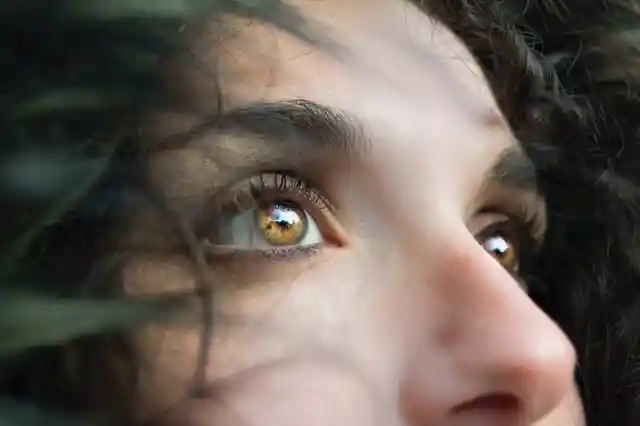

Alternatively, the nasal membranes can sometimes appear red rather than pink. This may be a sign of a respiratory infection such as a cold virus. Antibiotics, which target bacterial infections only, are no use against cold viruses and a typical treatment course includes bed rest and sometimes decongestants.
There’s no inflammation inside the nose
When the tissue inside the nose becomes swollen and inflamed, this can be the result of infection by a virus, bacteria or fungi. Swelling is an example of an immune response, as the body identifies an injury or infection and sends white blood cells to the area.
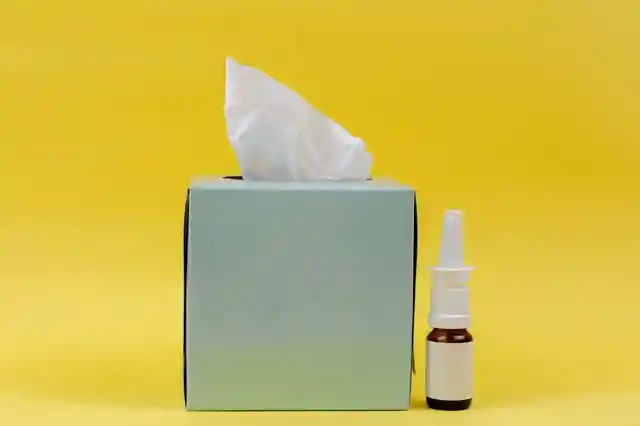

In turn, this process can cause fluids to leak into the surrounding tissue, resulting in swelling that may be painful and obstructive. However, the immune response system can also be triggered by the misuse of nasal hygiene solutions such as nasal sprays.
Any mucus is clear
The nose is a naturally moist and mucus-heavy environment, but any mucus coming out of it should ideally be clear. Yellow mucus is a common sign that your body is battling against an infection, and green mucus suggests a more heightened battle is taking place.


Brown snot is often caused by dried blood. Smoking and pollution-heavy environments, meanwhile, can turn your mucus black. However, persistent black mucus requires a trip to the doctor as it may indicate a fungal infection, which can lead to serious complications.
A spot of blood is not usually an issue
While the sight of blood when you blow your nose may be alarming, it is not as much of a cause for concern as you might expect. When the nose is irritated, it bleeds more easily than many other body parts. “This often occurs with viral infections or allergies due to frequent nose blowing or use of nasal sprays that may cause the tissues to become dry,” according to Alyssa Smolen, an advanced practice registered nurse.


“As long as it’s a relatively small amount of blood mixed with mucus, it’s not something to fret over,” she added. “If bleeding is continuous and does not stop with pressure, you should be evaluated by a health care provider.”
Sneezing should only be occasional
Sneezing is a common reaction to allergens and irritants, and a cold or respiratory infection may produce intense bouts of sneezing. However, unstoppable sneezing over long periods warrants a trip to the doctor, as it may signify a deeper problem.


One 12-year-old girl named Lauren Johnson suffered from uncontrollable sneezing over a four-month period, following an infection with the common cold. She sneezed as many as 12,000 times a day, and she later received a diagnosis of PANDAS, a condition associated with tics and OCD.
Any mucus is thin
Mucus is an excellent tool for the body to trap irritants and allergens, and in the midst of an infection, mucus production increases to fight the disease. However, the build-up of bacteria and cells in the nose can end up mixing with the mucus.
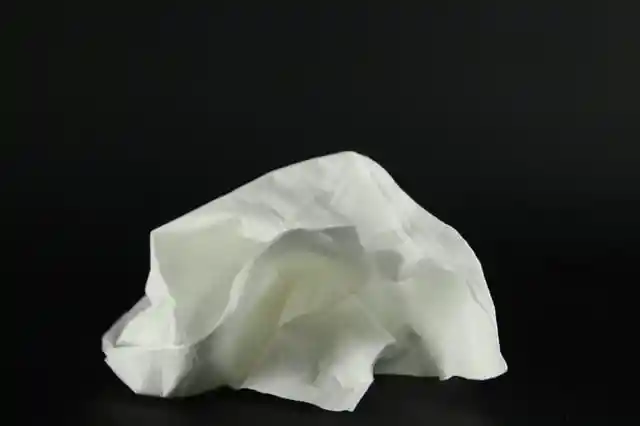

This mixture can make the mucus far more sticky and thick. An excess of sticky mucus in the nose or throat can alternatively be a symptom of lung disease, asthma, or even acid reflux. A build-up of sticky mucus in the nose or throat is called catarrh.
Mucus should be odourless
Not only should mucus be clear and thin when the body is healthy – it should also be odourless. Sometimes the sinuses around the nose undergo an infection when miniscule irritant particles pass along the nasal passages and get stuck in the cavities.


Along with inflammation and headaches, sinus infections can result in a strong sulphurous odour that resembles rotten eggs, detectable only by the patient. This occurs because the sinus blockage results in a build-up of mucus, dead cells and bacteria in the area.
There’s no pain in the nose bridge
Another symptom of a sinus infection is an ache in the nose bridge, which is the firm and bony part that lies on top of the nasal bone. In particular, nose bridge pain is linked to ethmoid sinusitis, which takes place only in specific sinuses.


The sinuses affected by ethmoid sinusitis are all located around the nose and eyes. This condition involves sinus inflammation and pus stagnation, which can create a build-up of pressure in the nose bridge area, a process that causes pain and sensitivity.
The nose bridge can signify health in new-borns
When the nose bridge is higher or lower than usual in a newborn baby, it can indicate that the child has a genetic disorder. Fetal alcohol syndrome can sometimes result in a flattened nose bridge, while people with Down's syndrome often have a flat nasal bridge too.


Rarer genetic conditions that affect the nose bridge include Fragile X syndrome, Klinefelter syndrome and Bartarlla-Scott syndrome. Patients with Bartarlla-Scott syndrome often exhibit other facial differences in addition to a broad nose bridge, such as a cleft palate, unibrow and a flattened midface.
The nasal septum is straight
A deviated septum is the medical term for when the septum – the bony part of the nose that divides the nostrils – is at a crooked angle to the face, rather than a perpendicular angle. This in itself is rarely a problem.


In fact, as many as 70% to 80% of people have a slightly deviated septum. However, when the septum is extremely crooked, it can interfere with breathing through the nose and prevent the patient from smelling things. In such cases, surgery is sometimes recommended.
There is no ‘saddle nose’
When the bony bridge of the nose collapses completely and the surrounding tissue sags, the resulting deformity is known as ‘saddle nose’. Many kinds of infections, traumas and surgeries can cause this physical change, not to mention certain substance abuse disorders.
For example, some injuries and surgeries can stimulate a lot of bleeding and pus, which can collect in the septum and reduce blood flow to the nose, which in turn leads to nasal saddling. The most common form of treatment is rhinoplasty, better known as a ‘nose job’.
Nasal breathing shouldn’t be difficult
Difficulty breathing through the nose can be caused by many disorders and issues already featured on this list, including nosebleeds or congestion from an infection. But another issue that can prevent normal nasal breathing is known in medical terms as nasal valve collapse.


Nasal valve collapse occurs when the nasal valve, which is the thinnest part of the nasal airway, becomes weak and collapses in on itself. This can reduce airflow from either or both nostrils and makes your nose feel blocked. This condition usually requires surgical correction.